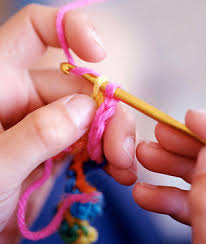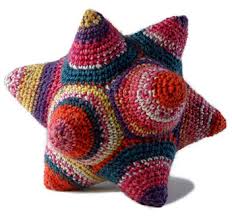
Hello Folks,
I haven’t done a Wednesday Night Project for a couple of weeks I apologise. I haven’t been feeling too good as Mr virus/cold/flu has been to visit. I’m glad to report I’m beginning to feel better now :-)
I thought tonight’s inspiration should for those new to crochet and beginners. I wanted to share some top sites that I believe are well worth a visit.
Learn How to crochet here About Crochet
If you are looking for new patterns to try, then if you can’t find what you want here please visit.
Crochet Pattern Central

TDaily Crocheter

For visual inspiration there are a plethora of great crochet groups that can be found on flickr.
The Happy Hookers
The Crochet Comments Group
The Art of Crochet Group
Hooked on Crochet Group

Crochet, a French word, meaning hook, enjoys the reputation of a needlework activity that is relaxing, yet creative. Designing striking stitches, crocheters through the ages handcrafted a variety of styles from gossamer filet work to the bold stitches used for afghans. Currently, crocheting has become popular with young mothers, teens, college-age kids, and even boys. Give yourself a mood lift and join in the fun at Simply Crochet where the enthusiasm for crocheting results in a wide variety of resources selected specially with you in mind.
Simply Crochet Com

The article below is sourced from Crochets Free Patterns
Many theorize that knitted and crochet items survived in the early period of imperialism. Many communities in this era used this kind of industry as their main source of living. The crocheted and knitted products are mostly purchased by the middle class society.
Crochet was known to identify the status symbol of a person from the early history. This kind culture was practiced by the royalties who were able to afford buying expensive lace products and make the value of crochet products to depreciate.
Many have theorized that knitting and crocheting was developed through the old practices of people leaving in countries like China, Middle Eastern countries, and in South America. Many people believe that crochet may have been practiced by early cultures to flex the muscles of the forefinger rather than a fashion hook. This theory was accepted by many craft historians because of the lack of artifact crochet products as proof of its traditional practices.
In the early 1800’s, many European communities have used crochet products in place of the much expensive lace made materials. Crocheting only requires fewer materials, and it is also widely accepted by different social classes. From these periods, crochet was done mostly on thread. The most common widely made products from crochet were filet crochet made in rows either open or close mesh to make a particular pattern. While in the 1900’s, the massive production of steel hooks have introduced many products which are made from thread.
In today’s time, crocheting and knitting is the pleasure of many people. It has recently evolved the interest of many people on handicraft making that made it so popular with the high quality of yarns and threads used. The pleasure of making a crochet item is working it with different yarn textures and colors.
As a beginner, a person should learn the process of making a pattern row and a single stitch crocheting. Here are some basic steps that will help a person learn how to make a crochet product.
1. First, the person may need the use of crochet supplies like a size G crochet hook, small scissors, worsted-weight yarn with any colors, and a big-eyed yarn needle.
2. He may start by holding the crochet hook in his right hand if he is right-handed. Then he may create a slipped knot on the hook.
3. He may slide the hooked yarn to the slipknot of the hook. This process will create a continuous stitch or a chained like stitches. He will then proceed to bringing back the yarn on top of the hook making the thread go into the hook and grabbing the slip knot into the hook.
4. He can pass on the first chain stitch allowing the knot to be properly hooked on the knot of the thread. This will allow the thread to be properly in place so that it will not loosen. A much tighter knot would be better to create a chain stitch.
5. He may insert the hook to the hole of on the next chain stitch, and then slide the yarn passing through the center of the second chain stitch going to the upper part of the hook. He may have now created two loops on the hook of the threads.
6. He may bring the yarn back on the hook from back to front and slide the knot in the center of the loops that he had created on the hook.
7. From the second loop, create another one chain stitch to make a counter clock wise loop. This allows the hook to remain in the chain stitches. He may start again in creating the following rows, creating the same loops on the previous rows.
8. He may create a single crochet stitch in the first loop tightened going to the following loops of the previous rows. He must be exactly sure to create the hook on the last stitch to retain the stitches on their places.
To finish the work, he may cut the excess yarn on the skin. He must not forget to retain at least 6 inches of the thread on the last chain stitch. This will allow him to slide the hook up to the upper part of the loops and bringing the thread into the last loops of the hook. As a beginner, he may find it difficult to do especially on more detailed crochet products. He may start doing these basic steps to help him get used with the techniques.

1 comment:
Thanks great timing as I've just ordered a teach yourself crochet book!
Post a Comment